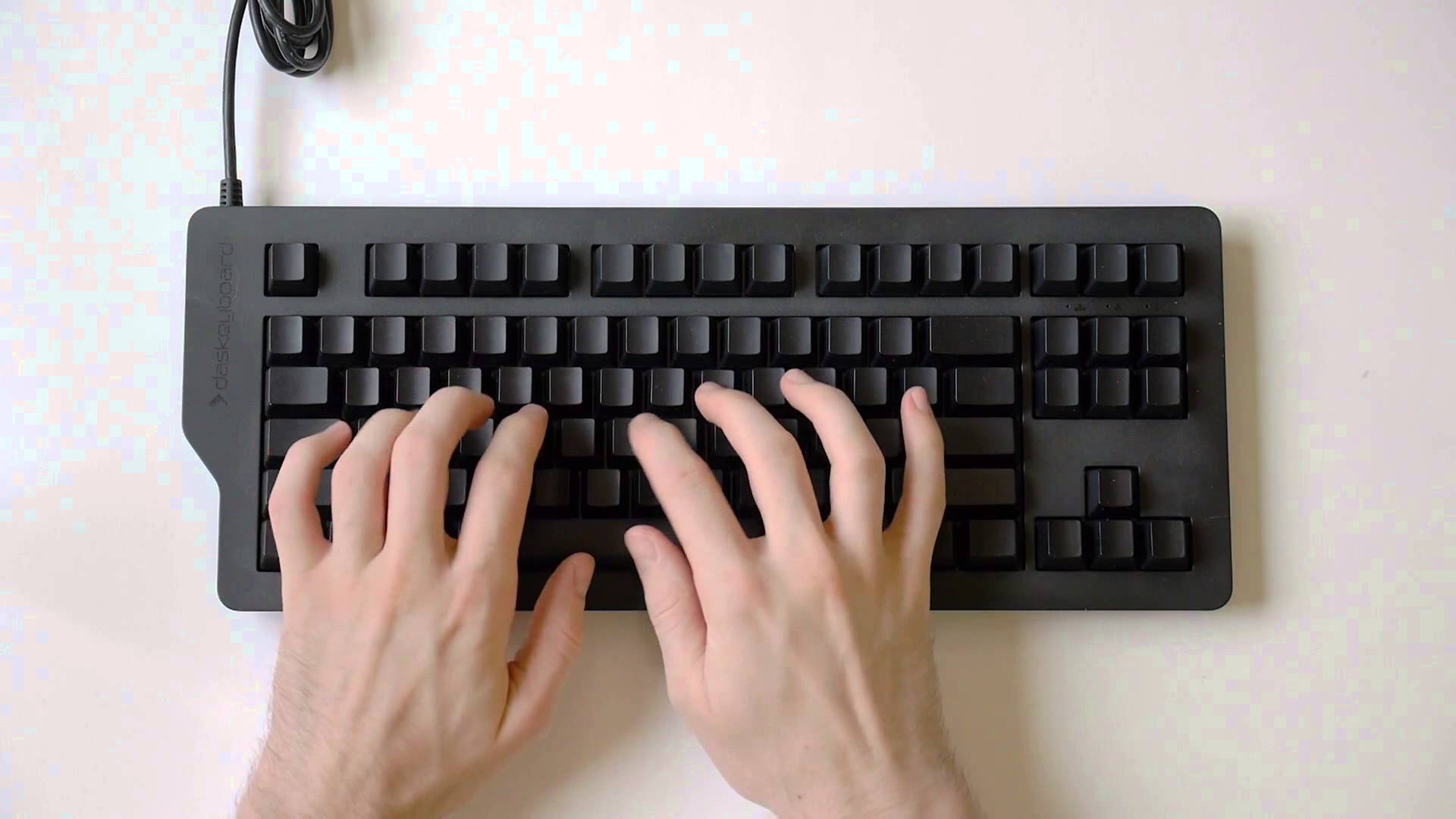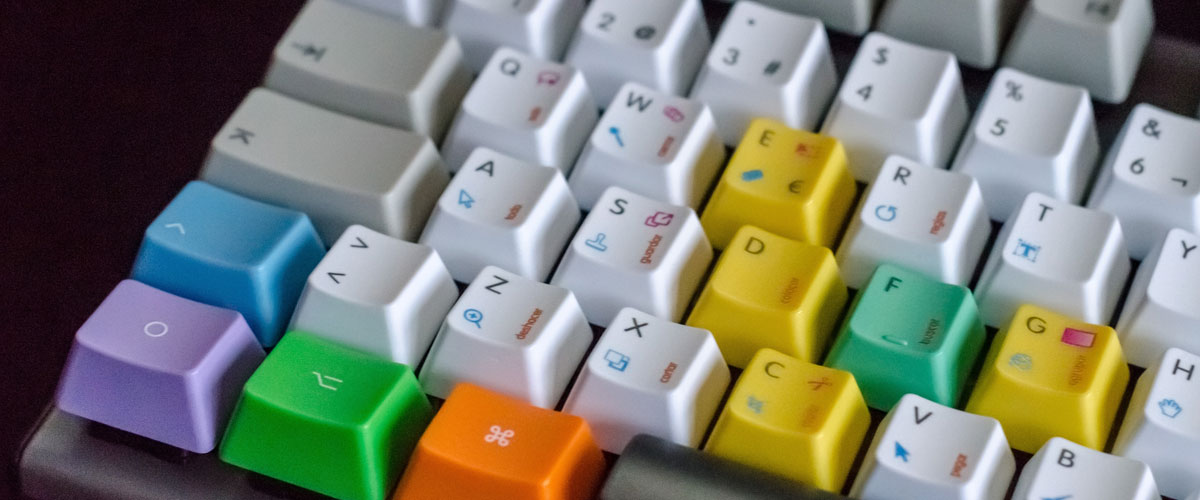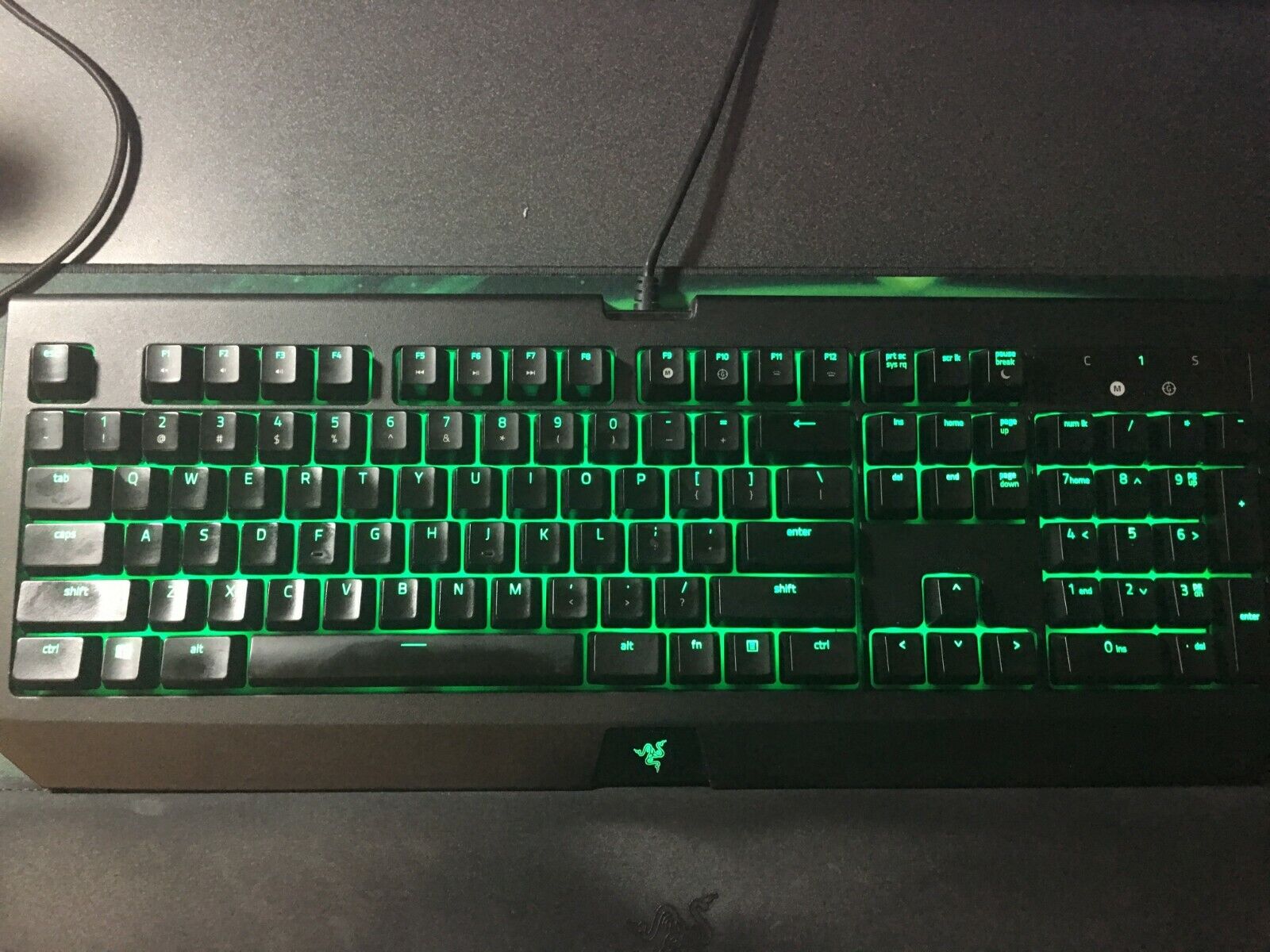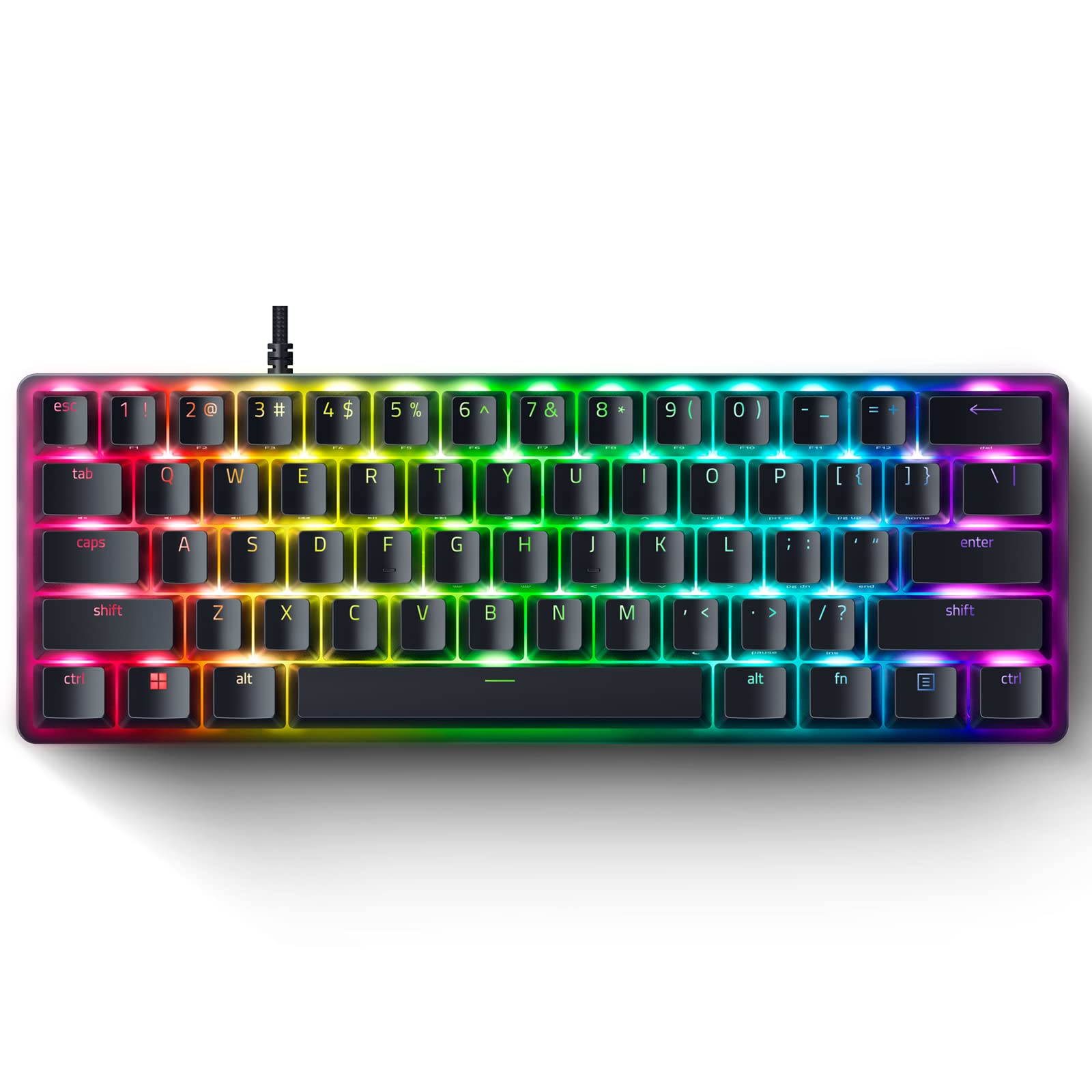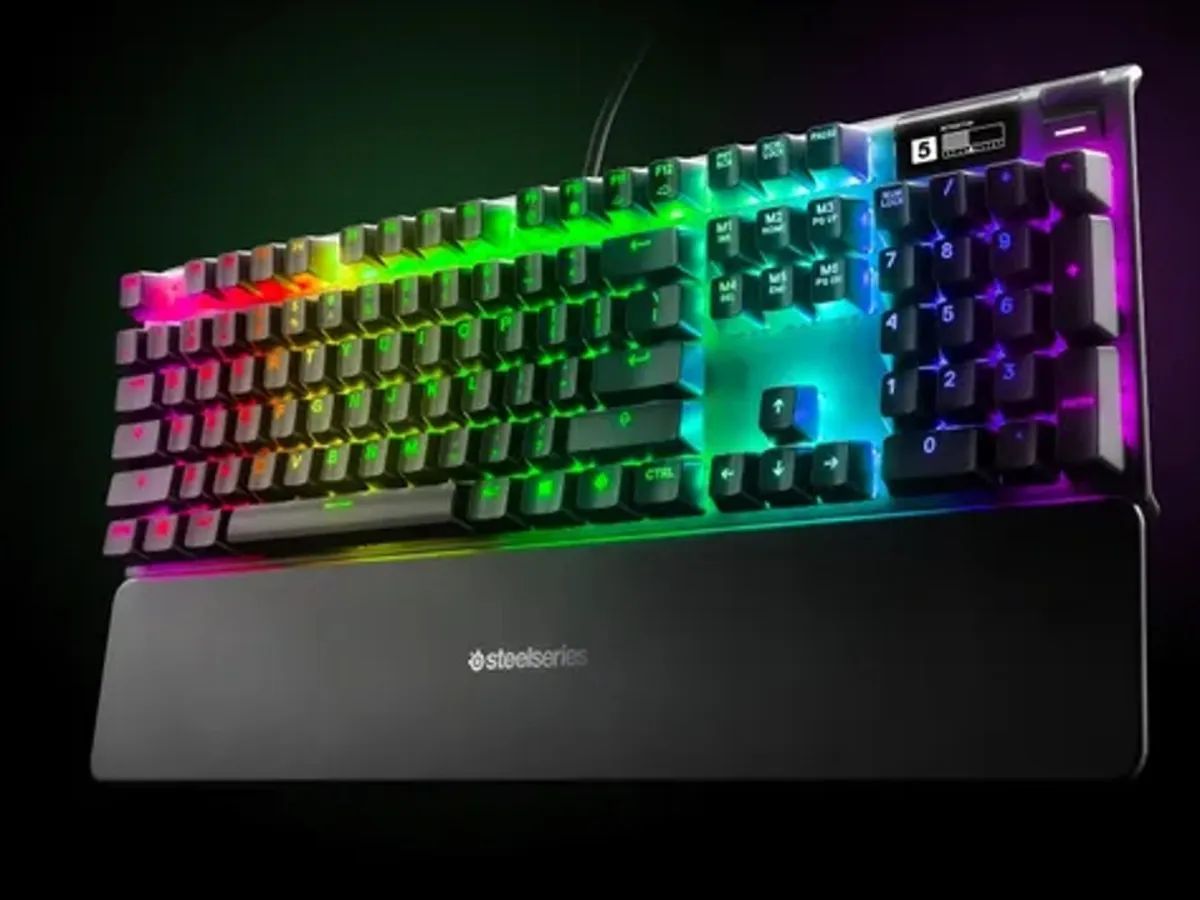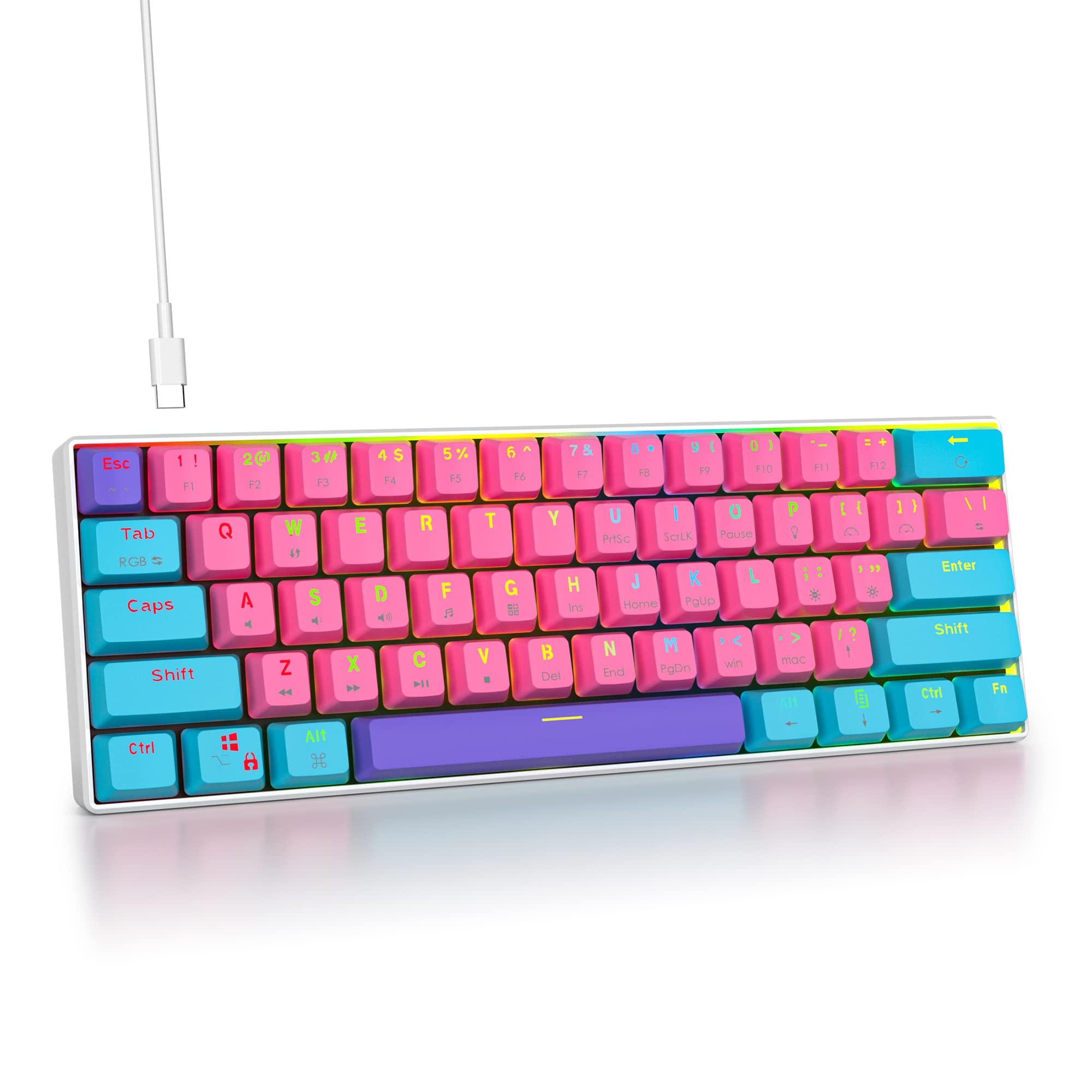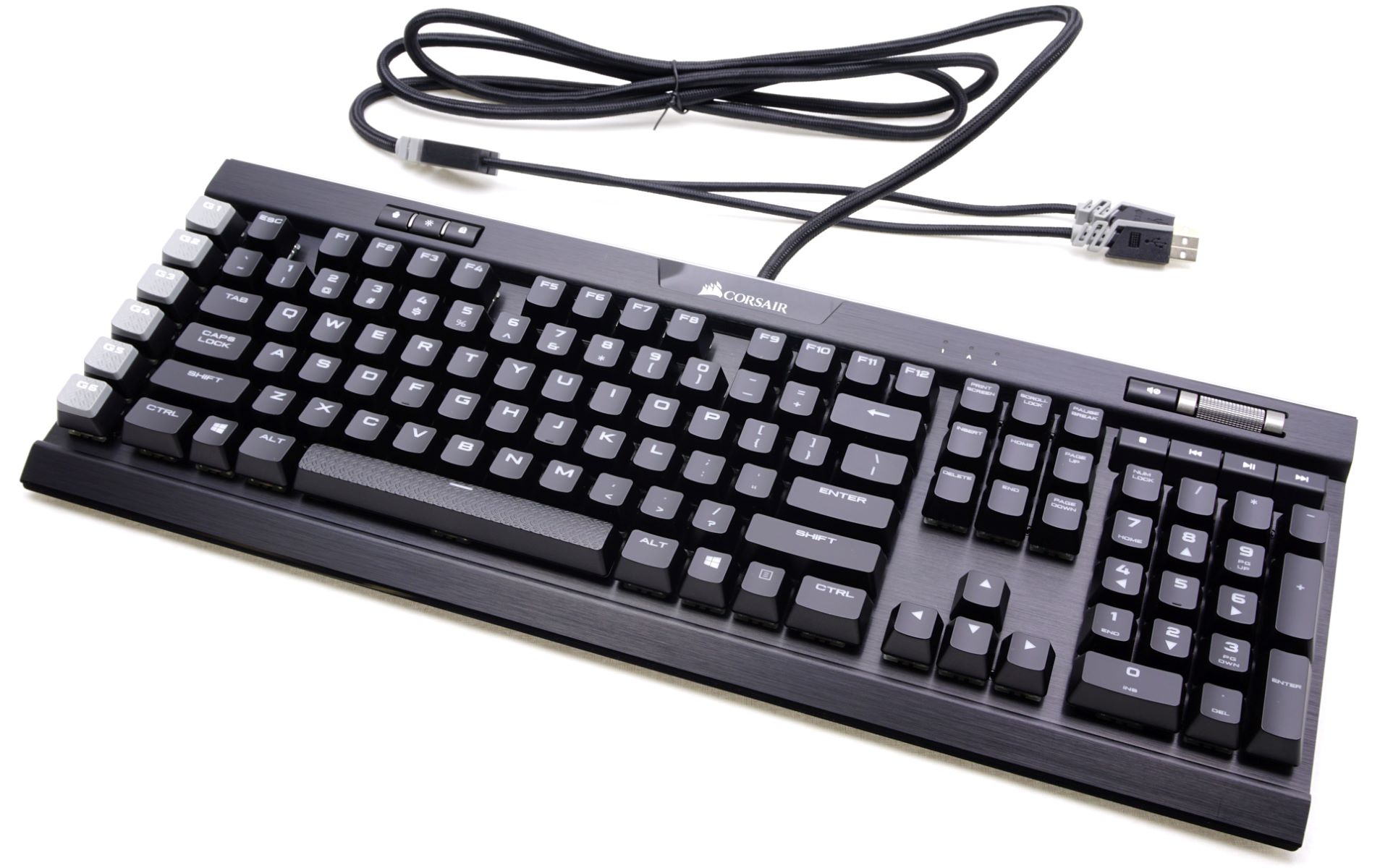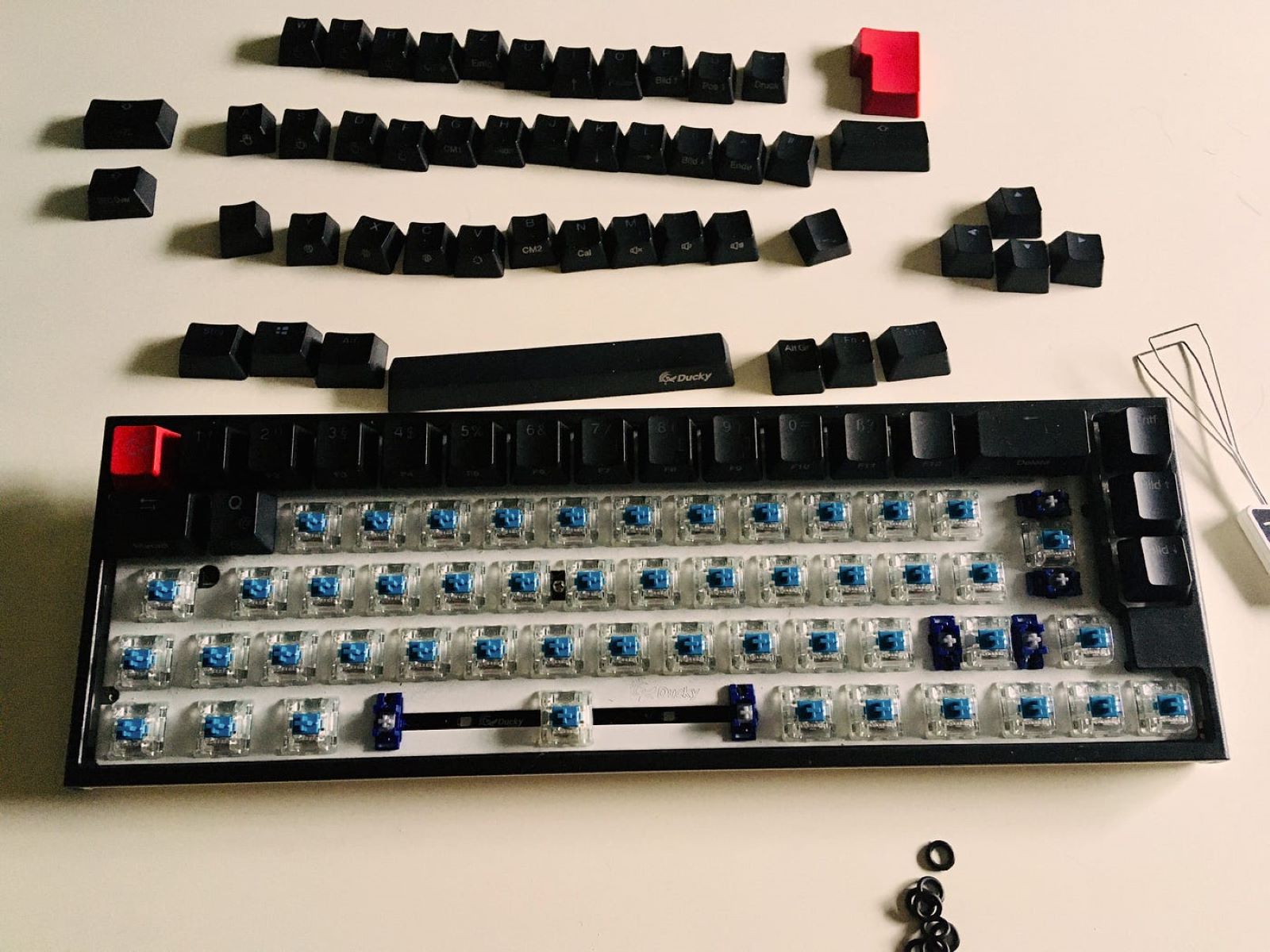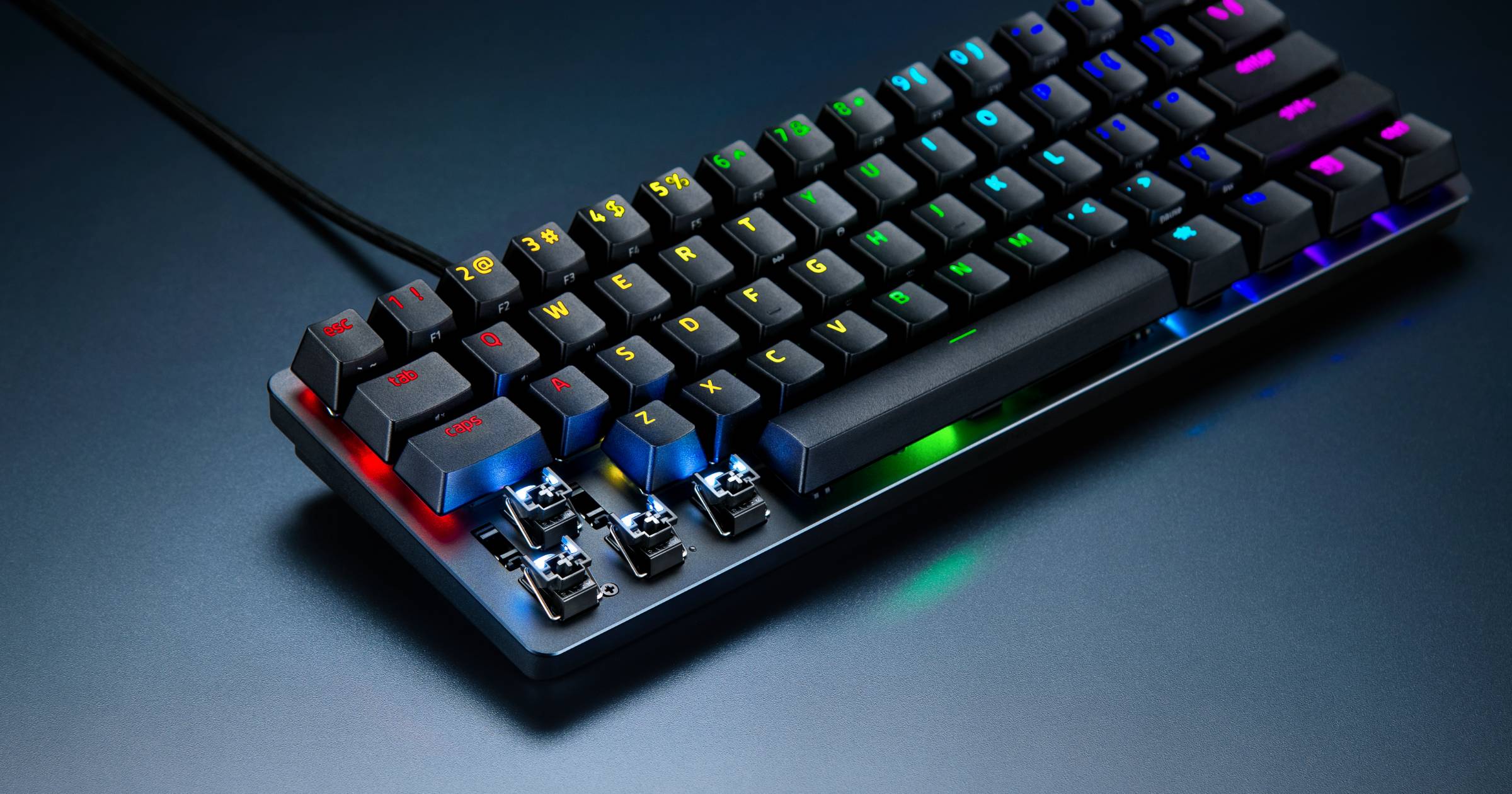Introduction
Are you tired of feeling like your typing speed is holding you back? Do you want to improve your productivity and efficiency at the keyboard? If so, you're in the right place. In this guide, we'll explore how to type faster on a mechanical keyboard, offering practical tips and techniques to help you boost your typing speed and accuracy.
Typing on a mechanical keyboard can be a game-changer for many individuals, offering a tactile and responsive typing experience that can significantly enhance your overall typing performance. Whether you're a writer, programmer, student, or professional, improving your typing speed can have a positive impact on your daily workflow, allowing you to complete tasks more efficiently and with greater ease.
As we delve into the strategies for improving your typing speed, it's important to note that this isn't about rushing through your work. Rather, it's about developing the skills and habits that will allow you to type with greater ease, comfort, and precision. By implementing the techniques outlined in this guide and practicing regularly, you can cultivate a more fluid and effortless typing experience that will serve you well in various personal and professional endeavors.
So, if you're ready to elevate your typing game and unlock your full potential at the keyboard, let's dive into the world of mechanical keyboard typing and discover how you can type faster and more efficiently than ever before.
Choose the Right Mechanical Keyboard
When it comes to improving your typing speed on a mechanical keyboard, selecting the right keyboard is a crucial first step. The market offers a wide array of mechanical keyboards, each with its own unique features and characteristics. Here are some key factors to consider when choosing the right mechanical keyboard:
- Switch Type: Mechanical keyboards come with different switch types, such as Cherry MX, Gateron, and Kailh, each offering distinct tactile feedback and actuation force. Consider trying out different switch types to find the one that best suits your typing style and preferences.
- Key Layout: The layout of the keys, including the size and spacing, can significantly impact your typing comfort and accuracy. Whether you prefer a compact layout for portability or a full-sized keyboard with dedicated function keys, choosing the right key layout is essential.
- Build Quality: A durable and well-constructed keyboard can provide a more stable typing platform and withstand the rigors of frequent use. Look for keyboards with high-quality materials and solid construction to ensure longevity and reliability.
- Customization Options: Some mechanical keyboards offer customizable keycaps, backlighting, and programmable keys, allowing you to tailor the keyboard to your specific typing needs and aesthetic preferences.
Additionally, ergonomic considerations such as wrist rest compatibility and adjustable tilt angles can contribute to a more comfortable typing experience, reducing strain and fatigue during extended typing sessions.
By carefully evaluating these factors and choosing a mechanical keyboard that aligns with your typing habits and ergonomic requirements, you can set the stage for improved typing speed and overall typing enjoyment. The right keyboard can enhance your typing experience, providing the tactile feedback and responsiveness needed to type with precision and efficiency.
Proper Hand Positioning
Efficient typing on a mechanical keyboard begins with proper hand positioning. Adopting the correct hand and finger placement can not only enhance your typing speed but also reduce the risk of strain and discomfort. Here are some essential tips for achieving optimal hand positioning:
- Posture and Alignment: Sit with your back straight and shoulders relaxed, ensuring that your elbows are at a comfortable angle. Position your keyboard so that your forearms are parallel to the ground, allowing for a natural and relaxed wrist position.
- Hand Placement: Rest your palms lightly on the base of the keyboard, keeping your fingers curved and poised over the home row keys (ASDF for the left hand and JKL; for the right hand). Maintain a light touch on the keys to facilitate fluid and effortless typing movements.
- Finger Movement: Practice using the appropriate fingers for each key, utilizing a combination of finger strength and dexterity to execute keystrokes with precision. Minimize unnecessary finger movements and aim for a smooth and controlled typing rhythm.
- Avoid Tension: Be mindful of tension in your hands and wrists. Strive for a relaxed and natural hand position, minimizing unnecessary muscle tension and allowing for greater flexibility and agility during typing.
By adhering to these guidelines and maintaining proper hand positioning, you can optimize your typing technique and reduce the likelihood of discomfort or repetitive strain injuries. Consistent practice and attention to ergonomic principles will help you develop a sustainable and efficient typing style that supports long-term typing proficiency and comfort.
Practice Regularly
Improving your typing speed on a mechanical keyboard requires consistent practice and dedication. By integrating regular typing practice into your routine, you can gradually enhance your muscle memory, finger dexterity, and overall typing proficiency. Here are some effective strategies for incorporating regular practice sessions into your daily schedule:
- Set Aside Dedicated Practice Time: Allocate specific time slots for focused typing practice, aiming for consistency and regularity in your practice routine. Whether it’s a few minutes each day or longer practice sessions a few times a week, establishing a practice schedule can help you stay committed to your typing improvement goals.
- Utilize Typing Exercises and Drills: Engage in typing exercises and drills designed to target specific areas of improvement, such as speed, accuracy, and finger placement. Online typing platforms and software offer a variety of customizable drills and practice modules to cater to your individual typing needs.
- Gradually Increase Difficulty: Challenge yourself by gradually increasing the difficulty of your practice exercises. Introduce complex texts, technical terminology, or coding snippets to expand your typing capabilities and adapt to diverse typing scenarios.
- Focus on Accuracy and Precision: While speed is important, prioritize accuracy and precision in your typing practice. Concentrate on hitting the correct keys with consistency and minimizing errors, laying a strong foundation for improved speed over time.
Additionally, integrating typing practice into your daily activities, such as composing emails, taking notes, or participating in online discussions, can provide valuable opportunities to reinforce your typing skills in real-world contexts.
Remember, the key to progress is persistence. By embracing a proactive and disciplined approach to regular practice, you can steadily enhance your typing speed and proficiency, unlocking the full potential of your mechanical keyboard and reaping the benefits of improved typing efficiency in your daily endeavors.
Learn Keyboard Shortcuts
Mastering keyboard shortcuts is a valuable skill that can significantly boost your typing efficiency and productivity on a mechanical keyboard. These time-saving combinations of keys enable you to execute various commands and actions without relying solely on mouse navigation, streamlining your workflow and reducing the time spent on repetitive tasks. Here’s how you can leverage keyboard shortcuts to enhance your typing experience:
- Explore Common Shortcuts: Familiarize yourself with popular and widely used keyboard shortcuts for tasks such as copying, pasting, undoing, saving, and navigating between open applications. Learning these fundamental shortcuts can yield immediate time-saving benefits in your daily computing activities.
- Customize Shortcuts for Specific Applications: Many software programs and operating systems allow users to customize keyboard shortcuts to align with their preferences and workflow. Take advantage of this feature to tailor shortcuts to your specific typing and application usage patterns.
- Utilize Text Expansion Tools: Employ text expansion utilities that enable you to create custom abbreviations or shortcuts for frequently used phrases, sentences, or snippets of code. This can expedite your typing by automatically expanding the abbreviated text when the corresponding shortcut is triggered.
- Learn Application-Specific Shortcuts: Different applications, such as word processors, graphic design software, and programming environments, offer unique sets of keyboard shortcuts tailored to their functionalities. Invest time in familiarizing yourself with application-specific shortcuts to optimize your workflow within each program.
By integrating keyboard shortcuts into your typing repertoire, you can navigate through tasks and applications with greater speed and precision, freeing up valuable time and mental bandwidth for more demanding aspects of your work. With consistent practice and utilization, keyboard shortcuts can become an indispensable asset in your quest for enhanced typing efficiency on a mechanical keyboard.
Use Online Typing Tools
Online typing tools offer a convenient and effective way to refine your typing skills and enhance your speed and accuracy on a mechanical keyboard. Whether you’re a beginner looking to build a strong foundation or a proficient typist aiming to further elevate your skills, these tools provide valuable resources to support your typing improvement journey. Here’s how you can leverage online typing tools to optimize your typing performance:
- Interactive Typing Tutors: Engage with interactive typing tutors and programs that guide you through structured lessons, exercises, and assessments designed to strengthen your typing technique and speed. These tutors often provide real-time feedback and progress tracking to monitor your improvement over time.
- Typing Games and Challenges: Embrace the fun and engaging nature of typing games and challenges available on online platforms. These gamified experiences not only make typing practice enjoyable but also encourage healthy competition and motivation to achieve higher scores and faster typing speeds.
- Typing Tests and Timed Sessions: Take advantage of typing tests and timed typing sessions to gauge your current typing speed and identify areas for improvement. Regularly participating in timed challenges can help you track your progress and set achievable speed goals.
- Specialized Typing Courses: Explore specialized typing courses and programs that cater to specific needs, such as coding or data entry. These courses often offer targeted exercises and lessons to address industry-specific typing requirements and challenges.
Furthermore, many online typing tools provide customizable settings to adapt the practice environment to your preferences, allowing you to adjust parameters such as text difficulty, typing speed goals, and keyboard layout options.
By integrating online typing tools into your practice regimen, you can benefit from diverse and dynamic learning experiences that foster continuous improvement and mastery of mechanical keyboard typing. Embrace the versatility and accessibility of these tools as you embark on your journey to elevate your typing proficiency and efficiency.
Take Breaks and Rest Your Hands
Amidst the pursuit of faster typing speeds, it’s crucial to prioritize the well-being of your hands and prevent potential strain or fatigue. Incorporating regular breaks and implementing hand-resting techniques can contribute to maintaining optimal hand health and comfort during extended typing sessions on a mechanical keyboard. Consider the following strategies to integrate breaks and hand-resting practices into your typing routine:
- Adopt the 20-20-20 Rule: Every 20 minutes, take a 20-second break to look at something 20 feet away. This simple yet effective practice can alleviate eye strain and provide a brief respite for your hands and fingers.
- Stretch and Mobilize: During breaks, perform gentle hand and wrist stretches to reduce tension and promote blood circulation. Incorporate wrist rotations, finger extensions, and hand flexion exercises to maintain flexibility and relieve any accumulated strain.
- Practice Mindful Resting: When taking breaks, consciously relax your hands and allow them to rest in a neutral position. Avoid excessive gripping or tension, and let your hands and fingers unwind to minimize the impact of prolonged typing sessions.
- Utilize Ergonomic Accessories: Consider utilizing ergonomic accessories such as wrist rests or ergonomic keyboards that promote a more natural hand and wrist alignment, reducing the risk of discomfort during typing sessions.
Additionally, incorporating microbreaks into your typing routine, where you briefly pause and release your hands from the keyboard, can serve as proactive measures to prevent strain and maintain hand comfort.
By embracing a balanced approach that includes regular breaks and mindful hand-resting practices, you can safeguard your hand health and sustain a comfortable typing experience on your mechanical keyboard. Prioritizing these considerations not only supports your immediate typing endeavors but also contributes to the long-term well-being of your hands and overall typing proficiency.
Conclusion
Embarking on the journey to type faster on a mechanical keyboard involves a multifaceted approach that encompasses the selection of the right keyboard, the cultivation of proper hand positioning, regular practice, mastery of keyboard shortcuts, utilization of online typing tools, and the integration of breaks for hand rest. By embracing these strategies and techniques, you can elevate your typing speed, accuracy, and overall efficiency, unlocking the full potential of your mechanical keyboard and enhancing your productivity in various personal and professional endeavors.
Choosing the right mechanical keyboard tailored to your preferences and ergonomic needs lays the foundation for a comfortable and responsive typing experience. Proper hand positioning, characterized by relaxed posture, balanced finger movement, and mindful tension management, fosters a sustainable and efficient typing technique that minimizes strain and supports long-term hand health.
Regular practice, complemented by the exploration of keyboard shortcuts and the utilization of online typing tools, empowers you to refine your typing skills, expand your typing repertoire, and track your progress over time. Embracing breaks and incorporating hand-resting practices are essential elements in maintaining hand comfort and mitigating the potential effects of prolonged typing sessions.
Through dedication, consistent practice, and a mindful approach to hand health, you can cultivate a proficient and fluid typing style that aligns with the tactile and responsive nature of a mechanical keyboard. By integrating these strategies into your typing routine, you can enhance your typing proficiency, optimize your workflow, and experience the full benefits of typing faster on a mechanical keyboard.
As you continue to refine your typing skills, remember that the journey toward faster and more efficient typing is an ongoing process. Embrace each step of improvement, celebrate your progress, and strive for a balanced approach that prioritizes both speed and comfort in your typing endeavors. With perseverance and a commitment to honing your skills, you can unlock the full potential of your mechanical keyboard and enjoy a seamless and rewarding typing experience.







